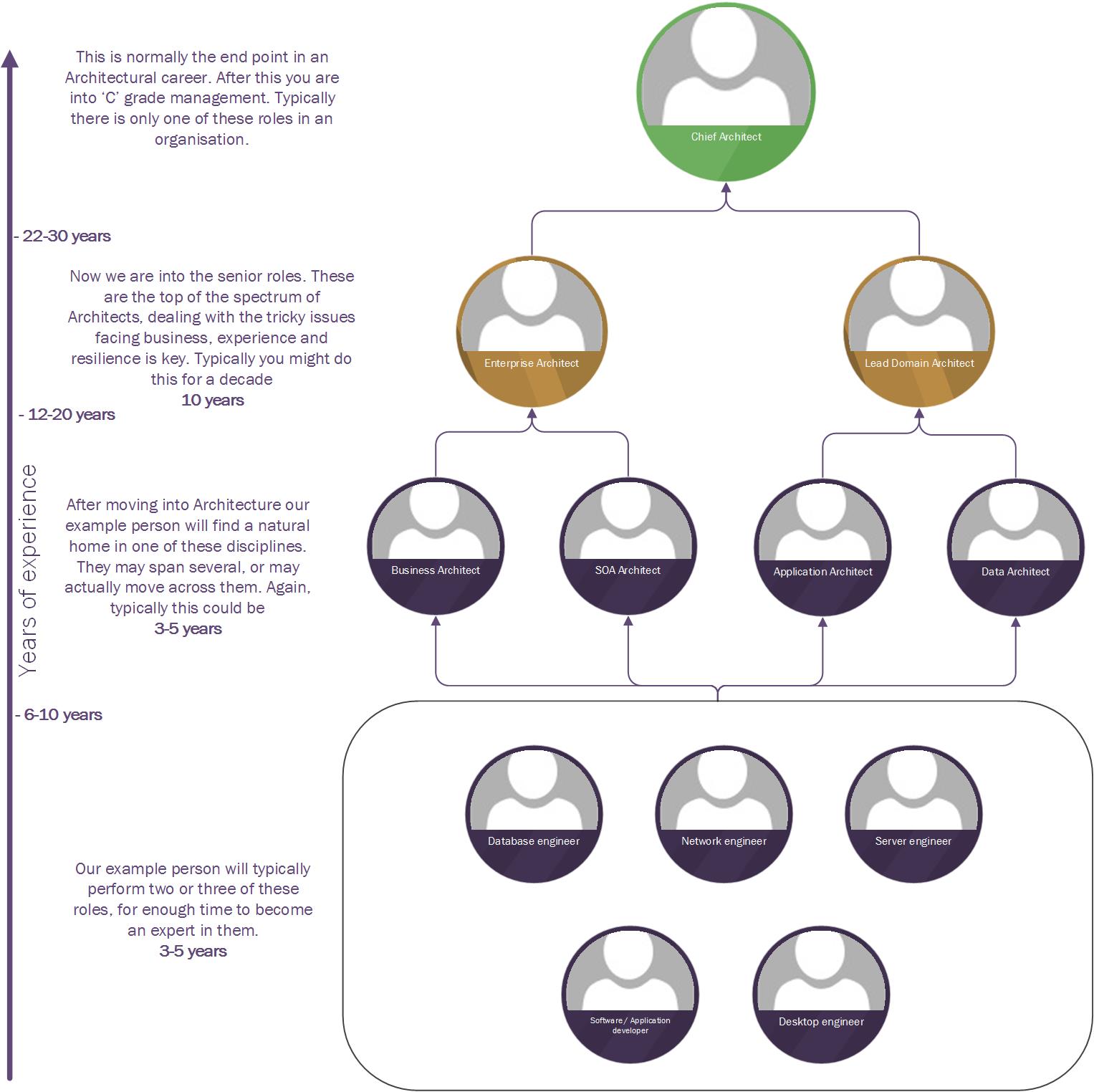|
The standard approach to becoming an Architect |
||||||||
Is there a standard approach to becoming an Architect? I'd consider that there is a standard pattern to becoming an Architect, but the individual steps on each individuals journey is likely to vary quite a bit based on drive, opportunity and situations that arise allowing an individual to move forward.
A foundation element in this approach, whatever the specific path, is that the individual works through the existing discipline, rises to the top in recognition and moves up or sideways to gain more experience or responsibility. In this way the individual is building both breadth and depth of experience in a variety of fields. A repercussion of this is that eventually the individual ends out with a broad range of experience across several disciplines. This makes them an ideal candidate to step into Architecture, whether that was their intended goal or not. You can test this out, do a straw poll in your office, how many people intentionally 'become an Architect' instead of 'naturally fell into it after a career in many other disciplines'?
We can model this as:

Breaking down the above image we can see that a common career trajectory into Architecture is via several disciplines. Once a person hits a certain level of maturity in the discipline they currently in, they expand their skillset by moving around, or up. As the person gains skills and moves upward each movement becomes harder and harder as the roles gain in seniority, and availability. From bottom to top is a shrinking model of available roles, with each position above typically having a significantly smaller number of positions available at each level. This arrives at an end point with the chief Architect role, which is typically a single role within an organisation.
As above in my intro, this model encourages individuals to gather both breadth and depth of skill in each field. This depth of background experience is one of the key components that allow an Architect to successfully complete normal architectural tasks, such as decision papers and end to end solution assurance.
One element of this that is especially true is an Architects ability to understand all the different aspects of a solution, and being able to play that solution back in a format suitable for a variety of stakeholders, at their level of view. This interpretation of a solution, played into the Business stakeholders is a key skill for Architects as it allows them to convey often complex, difficult solutions to key business representative in a consumable format for them. This Assurance role gives clarity to the business on the fact that defined solutions are aligning to their strategy, and that the project spend is delivering what they want, and what they think it is delivering.
Think of it as, Assurance requires credibility, and credibility only comes from established, evidenced experience.









There are no comments for this entry.
[Add Comment] [Subscribe to Comments]